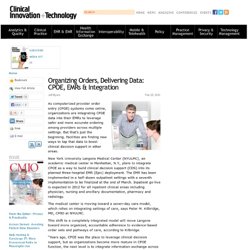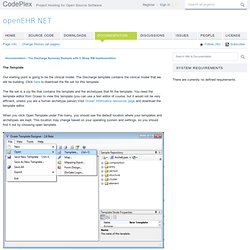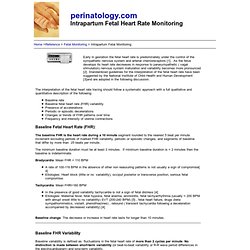

Organizing Orders, Delivering Data: CPOE, EMRs & Integration. As computerized provider order entry (CPOE) systems come online, organizations are integrating CPOE data into their EMRs to leverage safer and more accurate ordering among providers across multiple settings.

But that’s just the beginning. Facilities are finding new ways to tap that data to boost clinical decision support in other areas. New York University Langone Medical Center (NYULMC), an academic medical center in Manhattan, N.Y., plans to integrate CPOE as a way to build clinical decision support (CDS) into its planned three-hospital EMR (Epic) deployment. The EMR has been implemented in a half-dozen outpatient settings with a seventh implementation to be finalized at the end of March. Inpatient go-live is expected in 2012 for all inpatient clinical areas including physician, nursing and ancillary documentation, pharmacy and radiology. The medical center is moving toward a seven-day care model, which relies on integrating settings of care, says Peter M. OpenEHR.NET - Documentation.
The Template Our starting point is going to be the clinical model.

The Discharge template contains the clinical model that we will be building. Click here to download the file set for this template. The file set is a zip file that contains the template and the archetypes that fill the template. You need the template editor from Ocean to view this template (you can use a text editor of course, but it would not be very efficient, unless you are a human archetype parser) Visit Ocean Informatics resources page and download the template editor. When you click Open Template under File menu, you should see the default location where your templates and archetypes are kept. In my system, the default location is C:\Users\Public\Documents\My Clinical Models\Sample Set\Templates. OpenEHR. OpenEHR is an open standard specification in health informatics that describes the management and storage, retrieval and exchange of health data in electronic health records (EHRs).
In openEHR, all health data for a person is stored in a "one lifetime", vendor-independent, person-centred EHR. The openEHR specification is not concerned with the exchange of data between EHR-systems as this is the primary focus of other standards such as EN 13606 and HL7. The openEHR specifications are maintained by the openEHR Foundation, a not for profit foundation supporting the open research, development, and implementation of openEHR EHRs. The openEHR specifications are based on a combination of 15 years of European and Australian research and development into EHRs and new paradigms, including what has become known as the archetype methodology[1][2] for specification of content. Multi-level Modelling Methodology[edit] Notably, openEHR has been used to model shared care plan. Formalisms[edit] The openEHR archetype formalism.
Www.biomedcentral.com/content/pdf/1472-6947-13-57.pdf. Releases. Global Index Specifications Implementation Technology Specification (ITS) SPECITS Jira project | Roadmap | Issues Conformance SPECCNF Jira project | Roadmap | Issues.

PA Patient Encounter - HL7Wiki. Introduction A core part of HL7 V2 is Chapter 3 - Patient Administration that defines messages for events collectively called ADT (admission, discharge and transfer) or Patient Encounter Management.

Obviously if HL7 V3 is to replace HL7 V2 then V3 ADT/Patient Encounter messages must be included in the standard. The Patient Administration work group began work on V3 Patient Encounter messages nearly ten years ago. The first Draft Standard for Trial Use (DSTU) passed ballot in December 2003. While that DSTU was available for trial implementations the work group continued refining the content through a number of committee ballots and in May 2007 the work group produced an updated DSTU in hopes of encouraging industry feedback. Synapse.koreamed.org/Synapse/Data/PDFData/1088HIR/hir-17-199.pdf.
Development of a Provisional Domain Model for the Nursing Process for Use within the Health Level 7 Reference Information Model. The nursing profession is challenged to link developments in evidence-based practice, knowledge development, process optimization, terminology, and reference information models, among other areas.

The linkage between nursing domain information, in particular, terminology, and the HL7 RIM described here is necessary to achieve comparable data on nursing care for the communication and exchange of nursing information. This report has described a tentative and very generic domain model for the nursing process, using the UML activity diagram and the UML class diagram for dynamic behaviors and data structures, respectively. In addition, some details for a hierarchical organization of domain models are included. The purpose of the domain analysis and domain models is to allow an appropriate mapping from the specified domain to the Health Level 7 Reference Information Model. And , especially, need further work with respect to identifying the multiplicity. Clinical Care Classification (CCC) System, Version 2.5: Users Guide - Virginia K. Saba. Uploads/imgfck/NeuralNetworkBased.pdf. Is not available. Intrapartum Fetal Heart Rate Monitoring.
REFERENCES 1.

Renou P, Warwick N, Wood C :Autonomic control of fetal heart rate. Am J Obstet Gynecol 105:949,1969 PUBMED 2. Gagnon R, Campbell K, Hunse C, Patrick J Patterns of human fetal heart rate accelerations from 26 weeks to term.